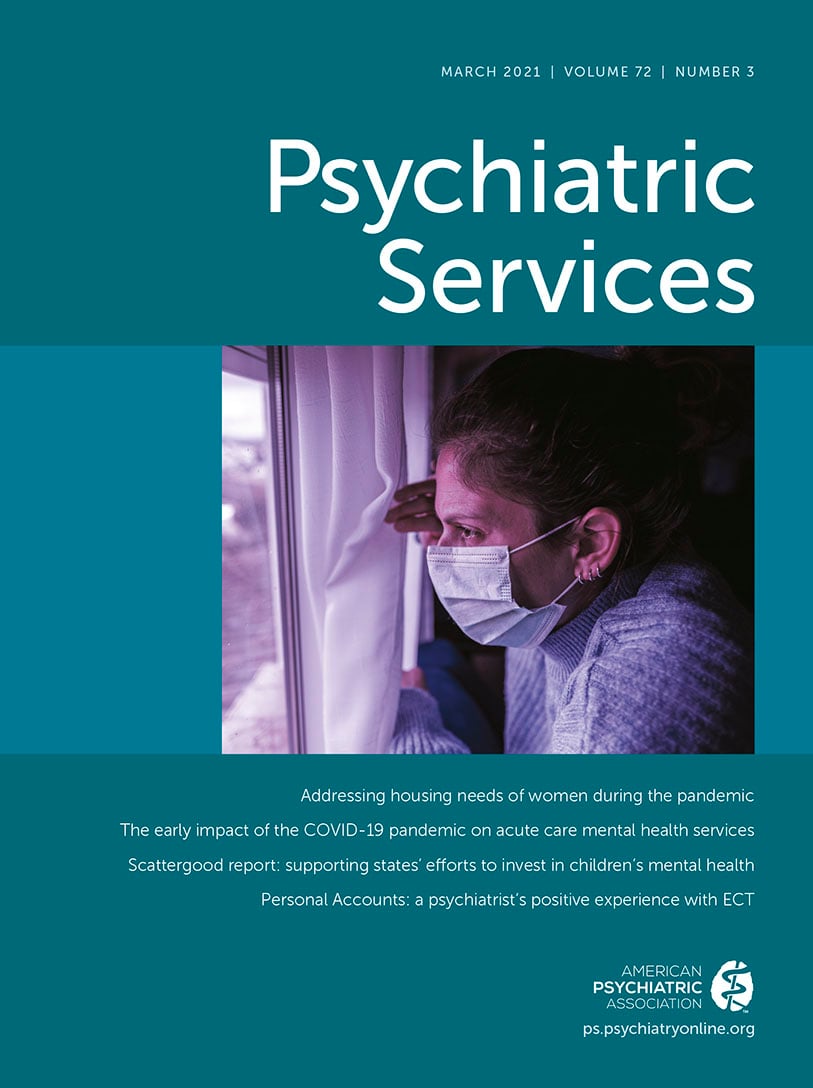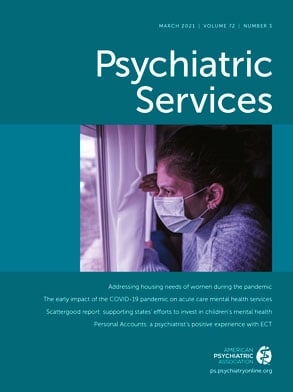Workers with mental disorders face a choice when they enter the competitive labor market. Their disability is largely invisible to others, but at some point, they may be confronted with the decision to disclose. Disclosure marks them as a member of a disadvantaged group that is subject to stigma and discrimination in the labor market (
1). On the other hand, disclosure may confer a number of legal and personal benefits in the workplace (
2,
3).
This Open Forum describes a framework with which to analyze the disclosure decision as it applies to workers with serious mental illness who are employed in mainstream, competitive jobs. Here, serious mental illness refers to schizophrenia, schizoaffective disorder, or bipolar disorder. A mainstream competitive job is one that pays at least the minimum wage, is not set aside for workers with disabilities, and was not obtained with the help of a mental health or vocational services provider. The conventional wisdom is that persons with the most serious mental illnesses are not capable of employment in such jobs. This stereotype is contradicted, however, by numerous examples of persons with mental illness whose symptoms are sufficiently controlled so that they are functioning successfully in mainstream employment (
4,
5).
There are, however, no systematic findings regarding the disclosure experience from large, representative samples of workers with serious mental illness employed in competitive jobs. Much of what is known about workplace disclosure comes from small-scale, qualitative studies that identify several factors workers consider as they weigh the disclosure decision. This Open Forum proposes a structure that organizes these factors in three dimensions: the extent to which a worker with serious mental illness can control the disclosure decision; the conditions a worker establishes regarding what, when, and to whom to disclose; and the potential monetary and nonmonetary costs of disclosure. The three dimensions provide a unifying framework for understanding the complexity and potential consequences of the disclosure decision.
Control
Mental illness is not easily observed when its acute symptoms are in remission. As a result, workers with serious mental illness have some control over the decision to conceal or disclose their illness. Concealment can be stressful (
2,
6) in and of itself. There is also an ongoing risk that mental illness will reveal itself. If so, the returning symptoms will inevitably be accompanied by the burden of secrecy (
3).
The literature suggests that two factors, residual symptoms and job compatibility, affect a worker’s control over the decision to disclose his or her mental illness (absent interference from a third party) (
2,
7,
8). If a worker is experiencing observable symptoms of mental illness (e.g., feeling nervous or depressed) or if current symptoms are affecting his or her work (e.g., not meeting deadlines because of difficulties concentrating), concealment is no longer an option. Either the worker must disclose something about his or her mental illness, or the employer is likely to inquire; otherwise, the worker may be subject to disciplinary action.
Job compatibility refers to the extent to which a worker with mental illness can meet the demands of his or her job without the need for employer-provided job accommodations. A job may be compatible because a worker’s functional limitations have no effect on essential job functions or because the job is sufficiently flexible that the worker can implement accommodations on his or her own (e.g., taking unscheduled breaks as needed) (
8). A job is less compatible if a worker needs special accommodations (e.g., change in work hours, workspace with fewer distractions) to be successful.
Employers are required to provide reasonable accommodations to otherwise qualified workers with mental disorders, under the mandates of the Americans with Disabilities Act of 1990 and its Amendments of 2008 (ADAAA) (
9). The protections of the ADAAA, however, are available only if a worker tells his or her employer about the mental illness. Hence, the decision to disclose is not a voluntary choice for workers who need employer-provided accommodations to retain a job.
Conditions
Workers who control the disclosure decision face a complex set of choices regarding when to disclose, to whom to disclose, and what they choose to say. The conditions, or boundaries, a worker places on disclosure are influenced by both internal and external factors.
Internal.
The degree to which workers prefer to keep details of their mental illness private is influenced by individual preferences, which are shaped by norms in their family and community (
7,
10,
11). Workers who are accustomed to honesty and frankness are likely to be more open regarding whom they tell and what they disclose than are those whose families or communities placed a high priority on privacy (i.e., “it’s nobody else’s business”). Workers who have strong preferences for being forthright and open may view the withholding of information about their mental illness as dishonest (
2,
10). They may still choose to conceal their mental illness to avoid negative consequences, but workers in this situation often say it is stressful not to be “the person they really are.” Among workers who have strong preferences for privacy, however, placing strict conditions on what they reveal about their history of mental illness is a positive choice (
3,
7). Concealment, or limited disclosure, can be a way to separate one’s private and public lives.
Some workers perceive disclosure as a moral obligation; that is, they have a responsibility to advocate for others by counteracting the negative stereotypes of mental illness (
3,
11). Stereotypes of persons with mental illness as incompetent, unreliable, unpredictable, responsible for their illness, and even dangerous are widespread in the general population (
7,
12,
13). For workers who adopt an advocacy position, disclosure becomes a means to benefit the broader community, by demonstrating that persons with mental illness can be productive in mainstream, competitive employment.
On the other hand, workers who have internalized the stigma and stereotypes of mental illness as applying to themselves tend to be less open in disclosure (
3,
14,
15). This finding makes intuitive sense. Workers who have incorporated notions of blame and shame into their self-image will be unlikely to share the source of their shame with others. Concealment can also be a way to cope with the loss of self-confidence that is often associated with mental illness (
3). That is, being perceived by coworkers and supervisors as a person “just like anyone else” helps some workers regain their self-confidence and self-esteem.
External.
Workers who have strong networks of social support within their family and friends (
3,
15), and workers who are aware of their legal rights under the ADAAA (
2,
7), appear to be more willing to disclose aspects of their mental illness than are those who lack such support. The mechanisms underlying these relationships are unclear, but perhaps the awareness of support (personal or legal) provides some protection from the potential negative repercussions of disclosure, empowering workers to be more open about their mental illness.
Costs
Workers who disclose their mental illness may be subject to employer or coworker discrimination that imposes costs that can be both monetary (e.g., loss of job or being passed over for promotion) and emotional (e.g., teasing, harassment, or exclusion from social interaction) (
16). The literature refers to workers’ assessments of the costs of disclosure as “anticipated discrimination,” which is believed to be correlated with both individual and work-related characteristics (
3,
6,
16).
The most relevant individual characteristics appear to be a worker’s diagnosis of mental illness and previous experiences of discrimination. Some diagnoses, most notably schizophrenia and psychosis, are stigma-laden terms, so workers with these diagnoses are likely to perceive relatively high costs if they choose to disclose in full (
2,
6,
7). One worker says, “If they knew I had ‘schizo-anything,’ I wouldn’t be allowed to practice” (
17). Not surprisingly, workers who have experienced mental illness related–stigma in the past are also likely to perceive high costs of disclosure (
3,
7,
16).
With respect to work-related characteristics, anticipated discrimination is correlated with a workers’ assessments of their job security and the culture of the workplace. All else being equal, the expected monetary costs of disclosure (in terms of job loss, reduced hours, etc.) will be lower for workers who cannot easily be replaced (
2,
10). For example, a worker who has acquired years of work experience or unique and valuable skills will face a lower risk of retaliatory discrimination after disclosure than, say, a recently hired fast food worker.
Workplaces vary widely in their attitudes toward differences among workers (e.g., in race, gender, or disability), in the way they manage (or mismanage) confidential information, and in the degree to which coworkers share personal information with one another. All else being equal, the costs of disclosure will be lower where the workplace culture is open and inclusive than in less tolerant workplaces (e.g., the “macho” culture of a construction site) (
13,
18). Workplaces with a high level of trust between workers and management are likely to have lower anticipated costs of disclosure because workers can feel secure that whatever they reveal about their mental illness will be treated as confidential (
5). Even in the most tolerant firms, however, preferences for privacy suggest that most workers with mental illness prefer a level of disclosure that is less than full (
19). (A chart showing the factors that influence the three dimensions of disclosure is available as an
online supplement to this article.)
Discussion
Society benefits when individuals with mental illness, who are capable of mainstream, competitive employment, are able to access jobs that provide financial security and independence. Yet, real and anticipated discrimination imposes costs that prevent many workers from disclosing their illness and obtaining the support they need to achieve this goal. Workplace interventions are needed to minimize the costs of disclosure so that workers who want or need to disclose can do so without penalty. However, in the absence of research that identifies correlations between factors that influence disclosure and subsequent work outcomes, it is impossible to know how to intervene, to whom, and when. To date, no systematic analyses are available that study disclosure decisions by workers with mental illness in mainstream, competitive jobs or that investigate what happens to such workers after disclosure.
A recently funded, ongoing study is designed to address this gap in the literature. Workers with serious mental illness (schizophrenia spectrum, bipolar, or major depressive disorders), who are or were previously employed in competitive jobs, are being recruited through a nationally representative health care survey. Thus far, the research team has interviewed >750 workers, collecting detailed information on their disclosure decisions, workplace characteristics, accommodations, and experiences of stigma. Their jobs reflect the entire gamut of occupations, including accountants, cooks, nurses, teachers, construction workers, data analysts, and office managers. When complete, the data will support analyses to identify individual, work-related, and service-related characteristics that are significantly correlated with a decision to disclose mental illness at work and to examine the relationships among disclosure, service engagement, and employment outcomes. This study, and others, is a necessary first step to designing interventions that will inform both workers’ decisions to disclose and employers’ responses to disclosure.
Acknowledgments
The author appreciates helpful comments from Steven C. Marcus, Ph.D., Allan DeSerpa, Ph.D., and anonymous reviewers.

